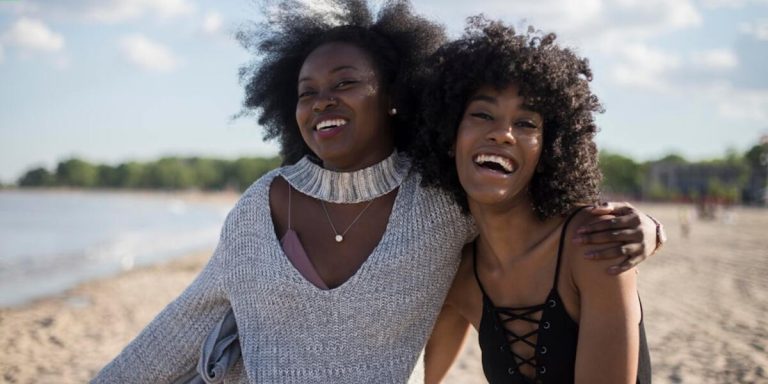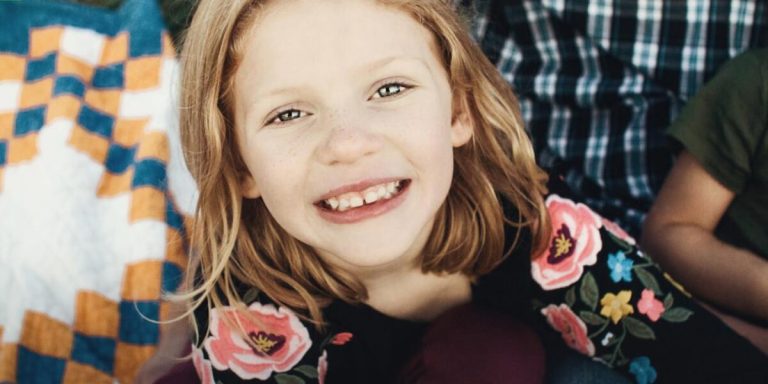Light Treatment for Hair Loss: A Comprehensive Guide to Understanding its Effectiveness
Exploring new advancements in the realm of hair loss treatments, one can’t help but notice a significant interest gravitating towards ‘light treatment for hair loss.’ This innovative approach incorporates ground-breaking technology to tackle common issues related to thinning locks and balding patterns. But how effective is this method? That’s what we aim to unpack in this comprehensive guide.
While traditional techniques such as oral medications or topical solutions may have been your first line of defense against hair fall, light therapy for hair growth introduces a non-invasive pathway that promises minimal side effects. Regaining those lush tresses might just become an easier feat with these technological interventions within our reach.
Did you know?
Did you know? Low-Level Light Therapy (LLLT), a technique used for hair loss treatment, was initially discovered by accident in the 1960s when scientists found that shaved mice re-grew hair faster under cold red lasers.
Understanding Light Treatment for Hair Loss
Light treatment for hair loss, or Low-Level Laser Therapy (LLLT), is revolutionizing trichology. This non-invasive therapy uses light-emitting diodes to stimulate hair growth and reduce balding.
This technique harnesses the science of cellular rejuvenation and metabolism. Weak cells on your scalp absorb photons emitted by low-level laser lights, gaining extra energy to speed up their functions.
The beauty of LLLT lies in its simplicity and ease-of-use – no chemicals, no major side effects – just therapeutic light waves doing all the work! The procedure typically involves exposing your scalp under a special hood or handheld device fitted with lasers for about 15 minutes. As simple as it might sound, consistent use can yield significant results over time – slowing down ongoing hair fall while encouraging healthier new follicle growth.
Regular sessions of certain treatments have shown promising outcomes, with scientific studies confirming enhanced thickness and density when used correctly under the guidance of certified therapists or medical experts. Additionally, the safety profile makes it an appealing alternative compared to other conventional pharmaceutical offerings.
Remember that any effective treatment requires:
- Patience
- Persistence
- A well-balanced diet rich in required nutrients to support overall health, including maintaining lustrous locks.
The Science Behind Low-Level Laser Therapy (LLLT)
Low-Level Laser Therapy, commonly known as LLLT, is making waves in the hair loss treatment sector. But how does this cutting-edge technology actually work? To understand that, we delve into the science behind it.
LLLT utilizes specific wavelengths of light to stimulate cellular activity within your scalp. This ultimately enhances hair growth and reduces baldness significantly. A simple way to envision this would be comparing your follicles to plants; just like sunlight helps with photosynthesis in flora, certain wavelengths from lasers help promote function and vitality for follicular cells.
The key lies in a process called photobiomodulation – a mouthful term signifying photon absorption by skin tissues. When our scalps absorb these photons emitted during an LLLT session, they boost blood flow while increasing oxygen supply – two crucial elements promoting healthy locks’ development!
Now you might wonder if all light could aid such therapeutic effects on our scalps? Not quite so! The effectiveness of LLLT relies heavily on its ‘low-level’ aspect — meaning only lights at specified low levels (between 650-950 nanometers) can traverse through skin layers without heating or causing discomfort yet still achieve desired outcomes.
A differentiating facet of Low-Level Laser Therapy is its non-invasiveness compared to other treatments— no incisions nor needles involved here! All you’ll feel are gentle waves bathing your scalp—an experience many find comforting rather than distressing.
Comparing LED and LLLT Efficacy in Hair Regrowth
In the world of hair loss treatments, both LED and Low-Level Laser Therapy (LLLT) have captured immense attention. With their non-invasive nature and promising results, it’s worthwhile to delve into a comparison of these two light treatment methods.
LED therapy was initially used in horticulture before making its way into dermatology. It utilizes numerous diodes that emit infrared light at varying wavelengths directly onto the scalp to stimulate hair follicle growth. The beauty of this method lies in its simplicity; technology has enabled compact devices suitable for home use – you can treat your hair while watching TV or working on tasks!
On the other hand, LLLT is a therapeutic technique known for regenerative capabilities such as wound healing and pain management since 1967- long enough to be significantly validated by several clinical studies. Its commendable efficiency comes from red or near infra-red lights tattooing photons onto scalp tissues which inspire cells’ energy factories- mitochondria-to foster stronger and faster-growing hairs.
What strikes first when comparing these luminary warriors against alopecia is their wavelength spectrum: LEDs work within broader areas-searchlight style–while lasers offer more targeted impact-spotlight fashion! This differentiation delivers high precision levels favoring laser techniques should sensitivity exist around specific head parts preferring concentrated stimulus above distributed impacts which LEDs specialize at dispensing across larger zones with uniform density.
Advancements in Home-Based Devices for Hair Rejuvenation
The landscape of hair loss treatments has taken a revolutionary turn with the advent of home-based devices for hair rejuvenation. Among these cutting-edge solutions, light treatment for hair loss stands out as one of the most promising and effective methods in 2023.
Hair regeneration at home is now possible thanks to innovative technology that harnesses the power of controlled light emissions. These non-invasive tools work by stimulating weak follicles through exposure to specific wavelengths from LED lights which promote cell growth and repair, ultimately leading to thicker, healthier locks over time.
Moreover, it’s worth appreciating how user-friendly these gadgets are. Many come with adjustable settings allowing individuals to tailor their therapeutic sessions according to personal needs or comfort level – making regrowth not just attainable but also convenient.
Truly, advancements in home-based devices have reshaped our strategy against alopecia; offering hope and revolutionizing its management while nullifying concerns relating to accessibility and ease-of-use within reach wherever you may be.
Evaluating the Effectiveness of At-Home Lasers and LEDs
Over the past few years, technological advancements have revolutionized hair loss treatments. Now you can combat your thinning strands right from the comfort of home using Laser or LED-based devices.
When it comes to light treatment for hair loss, at-home lasers and LEDs hold great potential. These tools emit low levels of light that stimulate cellular activity within your follicles – a process known as photobiomodulation which promotes healthier and stronger growth patterns in existing hairs while encouraging new ones to sprout.
First, let’s evaluate how these devices stand up against the doubts questioning their effectiveness:
1) User-Friendly: Light therapy tools designed for home use are considerably user-friendly with straightforward instructions provided by manufacturers making them accessible even if you’re not tech-savvy.
2) Scientifically-Supported Therapeutic Approach: The idea behind these gadgets lies in Low-Level Light Therapy (LLLT). This approach has gained acceptance over time due to clinical success rates observed across multiple studies published on leading medical research platforms.
Safety Considerations When Using Light Therapy at Home
Firstly, users should always read and follow the manufacturers’ instructions carefully. These directions are there not only to ensure maximum effectiveness of the device but also to safeguard you from any potential harm that might occur due to misuse or misunderstanding.
Secondly, never exceed suggested usage times. Light therapy works by stimulating your scalp’s follicles over a certain period; however, excessive exposure may result in counterproductive effects such as irritations or burns on the skin.
Thirdly, keep vigilant about hygiene when using these devices. They are typically designed for personal use and sharing them could risk spreading infections between users – especially if they’re placed directly onto bare skin.
Next up is eye protection! Hair rejuvenation devices often emit high-intensity lights which can be harmful if looked upon directly without suitable goggles or glasses.
Lastly remember everyone has unique bodies reaction tendencies towards light therapies – some people might see noticeable improvements within weeks whereas others may take months before positive changes become visible Therefore patience consistency key factors here too.
Integrating Light Treatments With Traditional Hair Loss Solutions
Incorporating light treatments into conventional hair loss solutions has opened a new chapter in the fight against baldness. As we ride on the wave of technological advancements, these next-gen therapies are fast becoming popular due to their non-invasive nature and promising results. It doesn’t replace traditional methods but enhances them, creating a holistic strategy for battling hair loss.
Low-Level Laser Therapy (LLLT) stimulates cellular activity within the scalp using specific wavelengths of light. This method rejuvenates impaired follicles caused by conditions like Androgenetic Alopecia or environmental damage and promotes blood circulation for improved nutrient delivery. While it may sound scientific, LLLT works as an additional step alongside mainstream treatments to promote healthier hair.
Also noteworthy is how seamless its integration could be – from handy at-home devices like helmets and combs to professional sessions alongside typical topical applications or oral medications! The future looks bright as more research delves into optimizing further this effective tool in our arsenal against alopecia.
Synergizing Minoxidil or Finasteride With Light Treatment Modalities
Hair loss can be a disheartening ordeal for anyone. As modern technology interpolates itself into the medical sector, light treatment modalities are quickly catching up as an effective remedy against hair thinning and baldness issues.
Incorporation of these new-age treatments with traditional solutions such as Minoxidil or Finasteride has been demonstrating promising results. Let’s analyze how this synergy works to combat hair loss effectively.
Minoxidil is renowned in promoting hair growth by extending the phase of growth in existing follicles while reviving dormant ones. On the other hand, Finasteride inhibits DHT production – a hormone responsible for male pattern baldness.
Light Therapy complements both aforementioned remedies impeccably:
1) Laser Phototherapy: This form utilizes low-level laser therapy (LLLT). It invigorates circulation to hair follicles which stimulates enhanced nutrient absorption – further boosting effects of Minoxidil or Finasteride.
2) Red LED Light Treatment: A proven compounder; it excites cells within your scalp leading them operate at maximum capacity, hence optimally utilizing active ingredients delivered via topical applications like Minoxidil.
Choosing between incorporating light therapies depends on individual needs and type of alopecia one encounters but combining either alone or together with conventional methods have shown considerable strides against receding tresses according to recent 2023 studies.
The Role of Nutritional Support While Undergoing Hair Growth Therapies
Nutritional support plays an indispensable role when you are undergoing hair growth therapies, such as light treatment for hair loss. It gears up your body to respond effectively to the therapy and promotes superior results.
Dietary choices significantly impact our overall health, including that of our hair. When battling with thinning strands or alopecia, a well-rounded diet can act as internal armor against these challenges. Nutrition provides much-needed nourishment for your follicles from within while treatments like low-level laser therapy (LLLT) stimulate them externally.
Secondly, iron is another critical nutrient required by your scalp cells to grow new hairs robustly even after exposure to therapeutic lights used in LLLT techniques employed today in 2023. Consuming green leafy vegetables or red meat frequently ensures ample supplementation necessary for effective cellular repair post-therapy.
Omega-3 fatty acids fortify every cell’s outer layer on your scalp protecting it from possible damage caused by metabolic changes during various anti-hair loss procedures like LED-based photobiomodulation treatments – increasingly popular over recent years due its non-invasive nature.
Conclusion
In conclusion, light treatment for hair loss is not just an effective solution but a revolutionary approach that may offer new hope to those grappling with this discomforting issue. By harnessing the power of light energy, it’s possible to stimulate hair follicles and promote regrowth in areas where traditional treatments might have failed.
Thank you for journeying through this comprehensive guide on understanding its effectiveness. We encourage you to explore more enlightening topics around ‘Hair Loss Treatments’ on our website – your one-stop platform offering well-researched solutions and scientifically-backed practices tailored made just for you!







